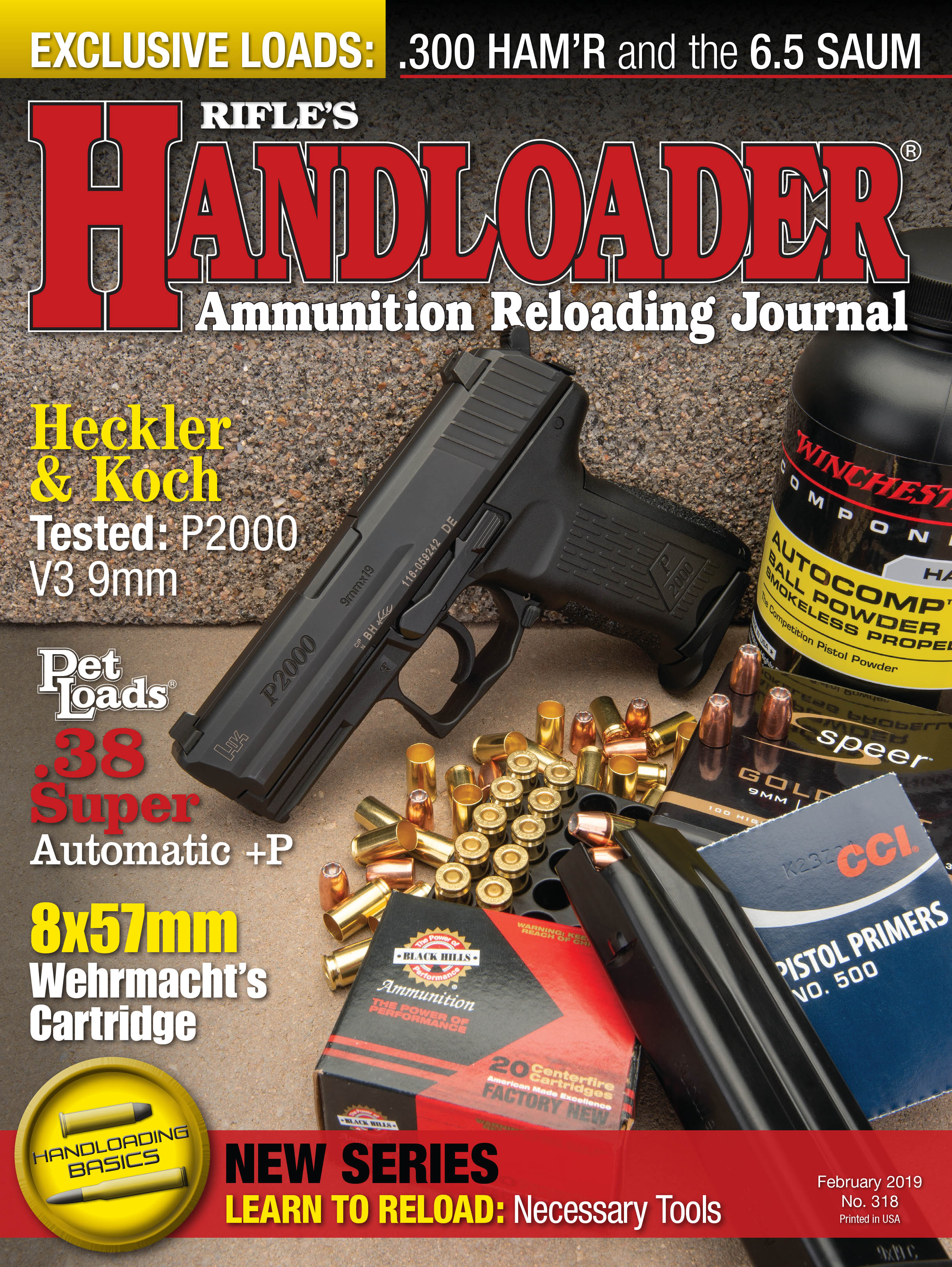Load Development
The .357 Magnum in a Rifle
other By: John Haviland |
The .357 Magnum is a useful and fun cartridge when fired from a revolver. Shot from the longer barrel of a rifle, though, the
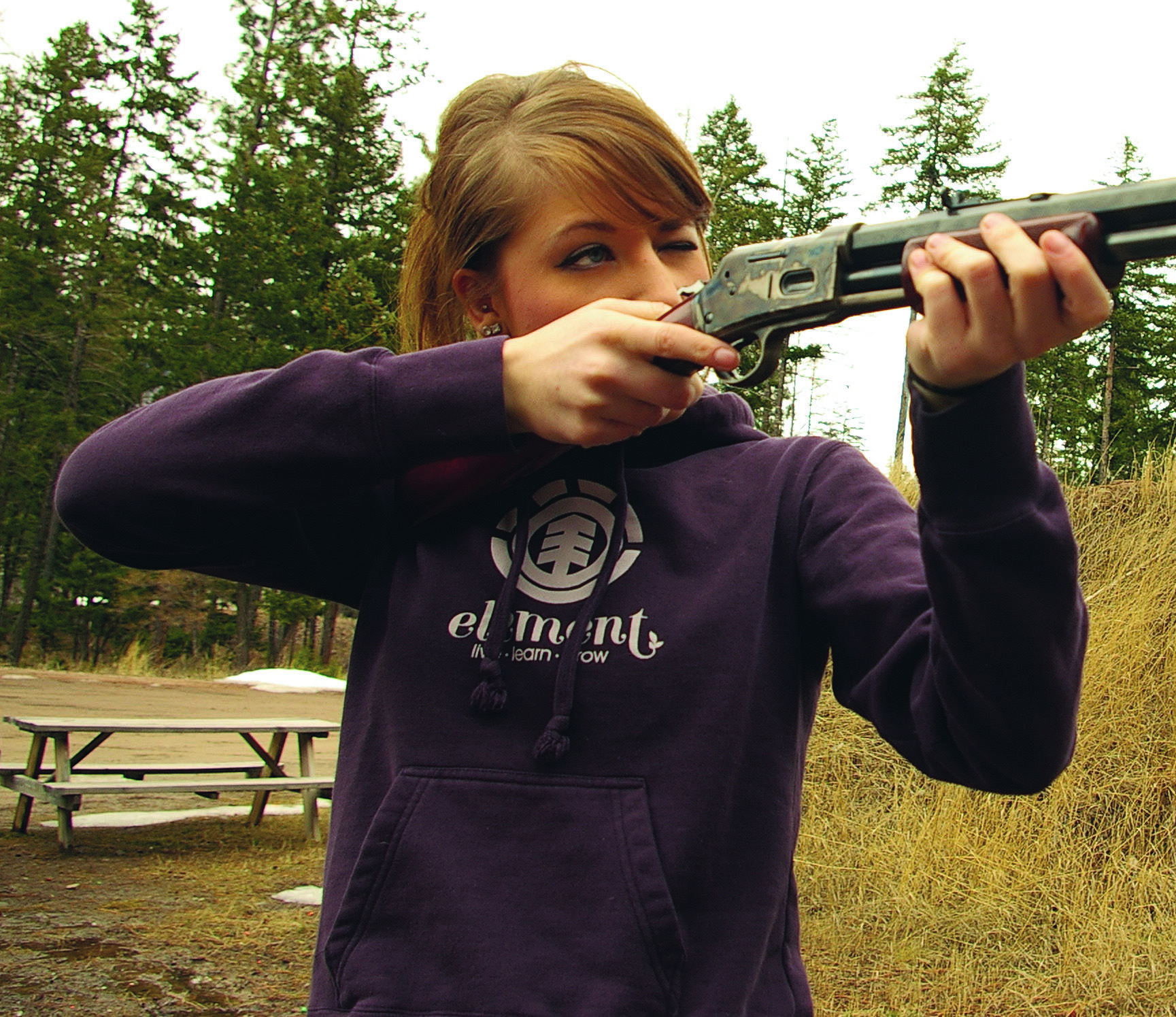
Bullets
The chambers in a .357 revolver’s cylinder offer quite a bit of leeway in what they accept in cartridge length and bullet profile. A rifle’s action demands a more exact cartridge length. A .357 Magnum cartridge over the established 1.590-inch length will not fit or cycle through the Uberti’s action. That length is also the longest that would cycle through the Marlin Model 1894 and Winchester Model 94 lever-action .357s I’ve shot in the past. The Uberti doesn’t have a feeding ramp at the entrance to its chamber, and bullets with a protruding shoulder catch on the bottom of the chamber mouth. Shooting jacketed bullets through the Uberti isn’t a problem, because they don’t have an abrupt edge from the nose back toward full diameter; but swaged lead semi-wadcutter bullets and bullets cast from moulds like the RCBS 38-150-SWC and Lyman 358156 refused to enter the chamber.
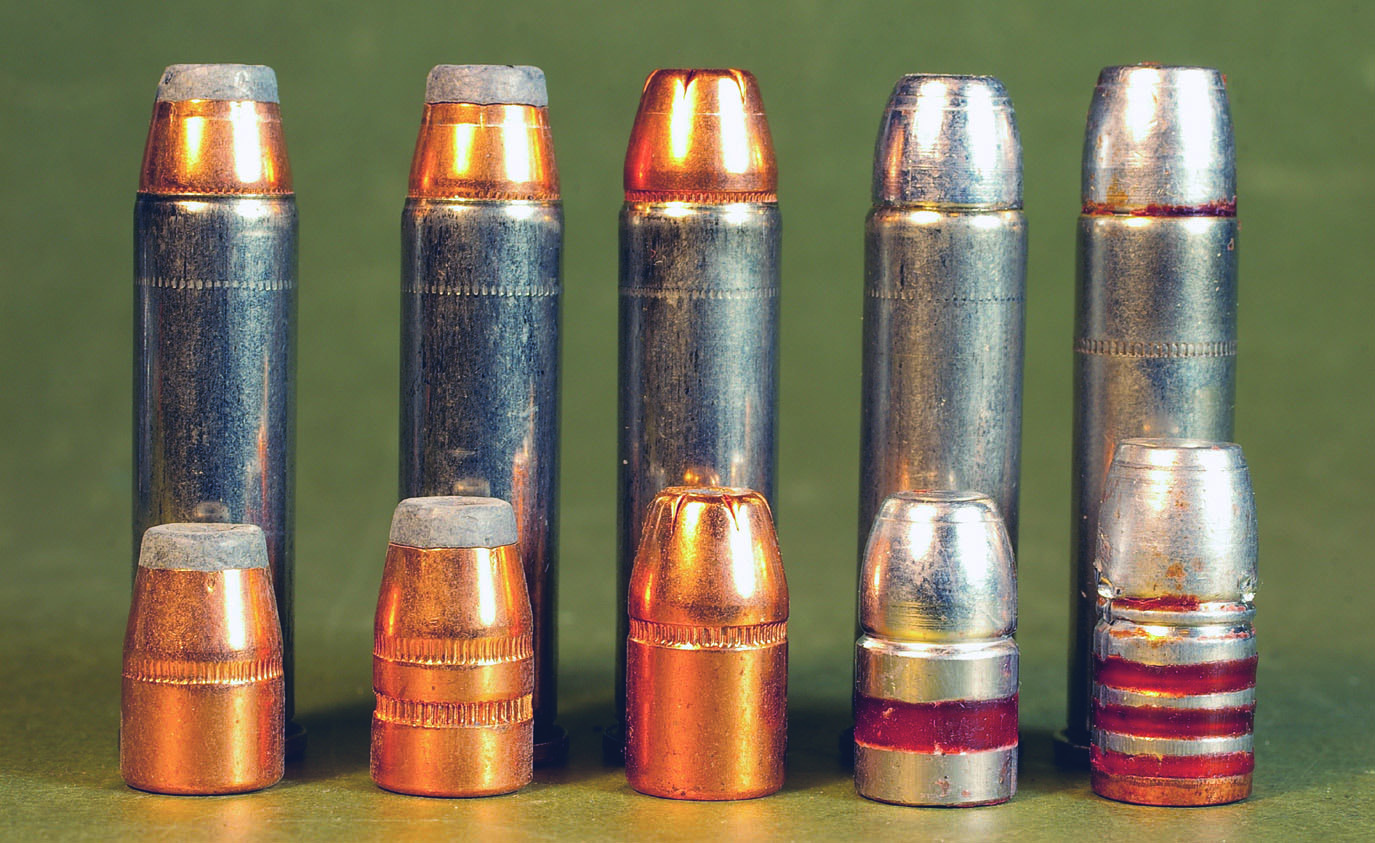
I tried bullets cast from an LBT 358 200 FN mould, but that bullet seated in a .357 case with the mouth folded in the bullet’s crimping groove measured 1.641 inches in length, a bit longer to cycle through the Uberti’s action. I single loaded cartridges by hand into the chamber, and they shot great and had an average muzzle velocity of 1,246 fps. The bullets could be loaded in .38 Special cases, and the cartridges would be short enough to fit, but that would reduce the velocity of the heavy bullet. For a high-energy load, it’s probably better to shoot 158-grain bullets with their 500 fps of additional velocity.
Powders
The Uberti’s 20-inch barrel and closed breech fired various bullets somewhat over 800 fps faster than a revolver with a 4-inch
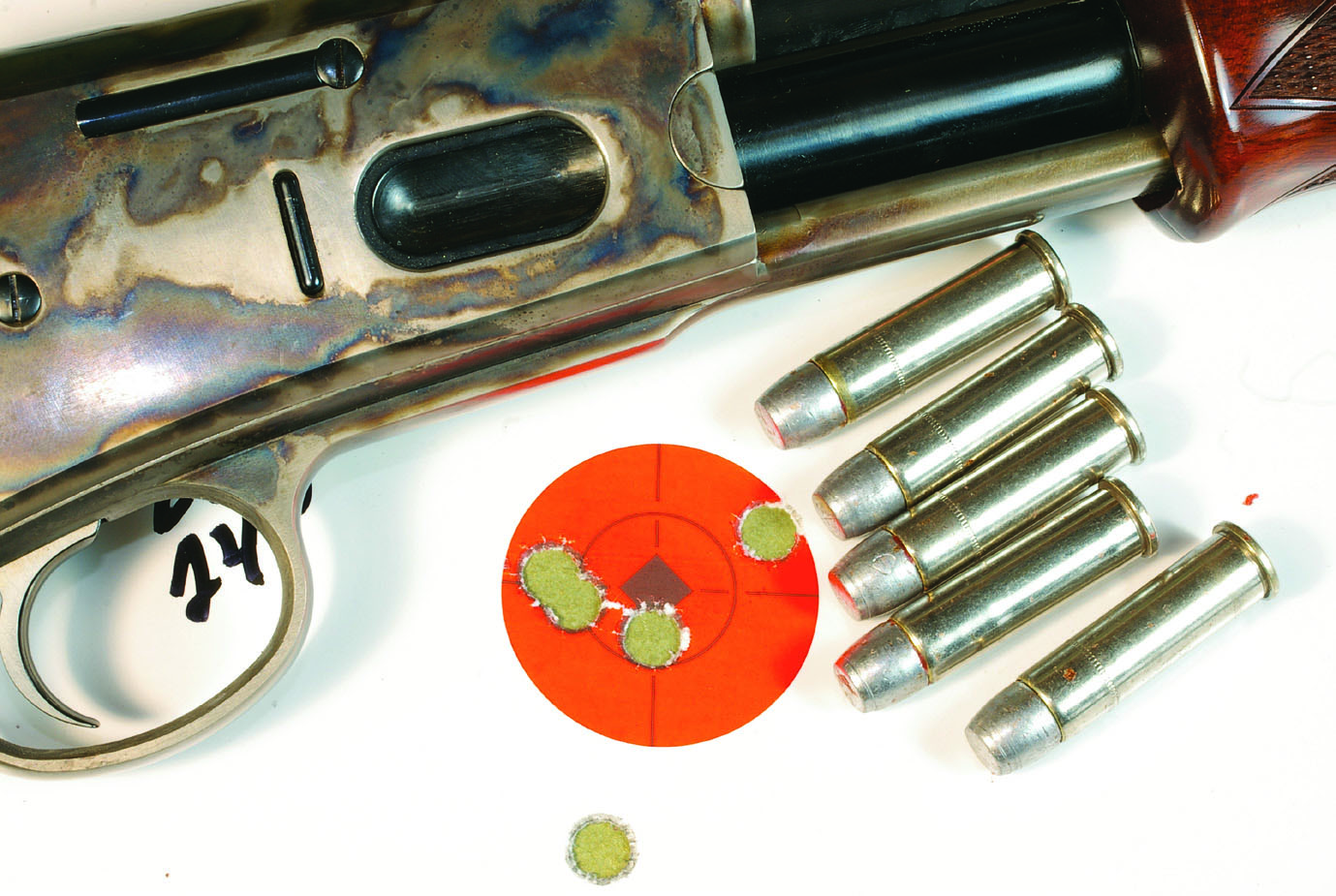
I tried 18.3 grains of Power Pro 300-MP with the plain-base bullets cast from an RCBS 38-158-CM mould. Velocity was over 1,700 fps, but accuracy was on the poor side, as in five bullets in a bucket at 25 yards. I didn’t think groups with the cast bullet would be much better when the chronograph displayed velocities slightly below 1,400 fps with 7.0 grains of Unique and ZIP. That speed is about where accuracy falls off with plain-base bullets, but to my pleasant surprise, the cast bullet shot rather well with the two powders.
Trail Boss is the powder for a cowboy action shooting load. One bullet with Trail Boss strayed from the others to somewhat increase group size over groups shot with Unique and ZIP, but accuracy was still acceptable. Recoil energy is a slight 1.1 foot-pounds with 4.0 grains of Trail Boss and the cast bullet. That is barely enough kick to nudge the sights of a target when firing a magazine full of cartridges as fast as possible while dressed up like desperado “Headstone Harry.” Hodgdon’s 2012 Annual Manual lists 3.2 grains as the minimum amount of Trail Boss with a 158-grain lead bullet for a revolver. That light amount of powder might not develop enough powder gas to push a bullet through a longer rifle barrel, resulting in a bullet stuck in the bore.
Loading
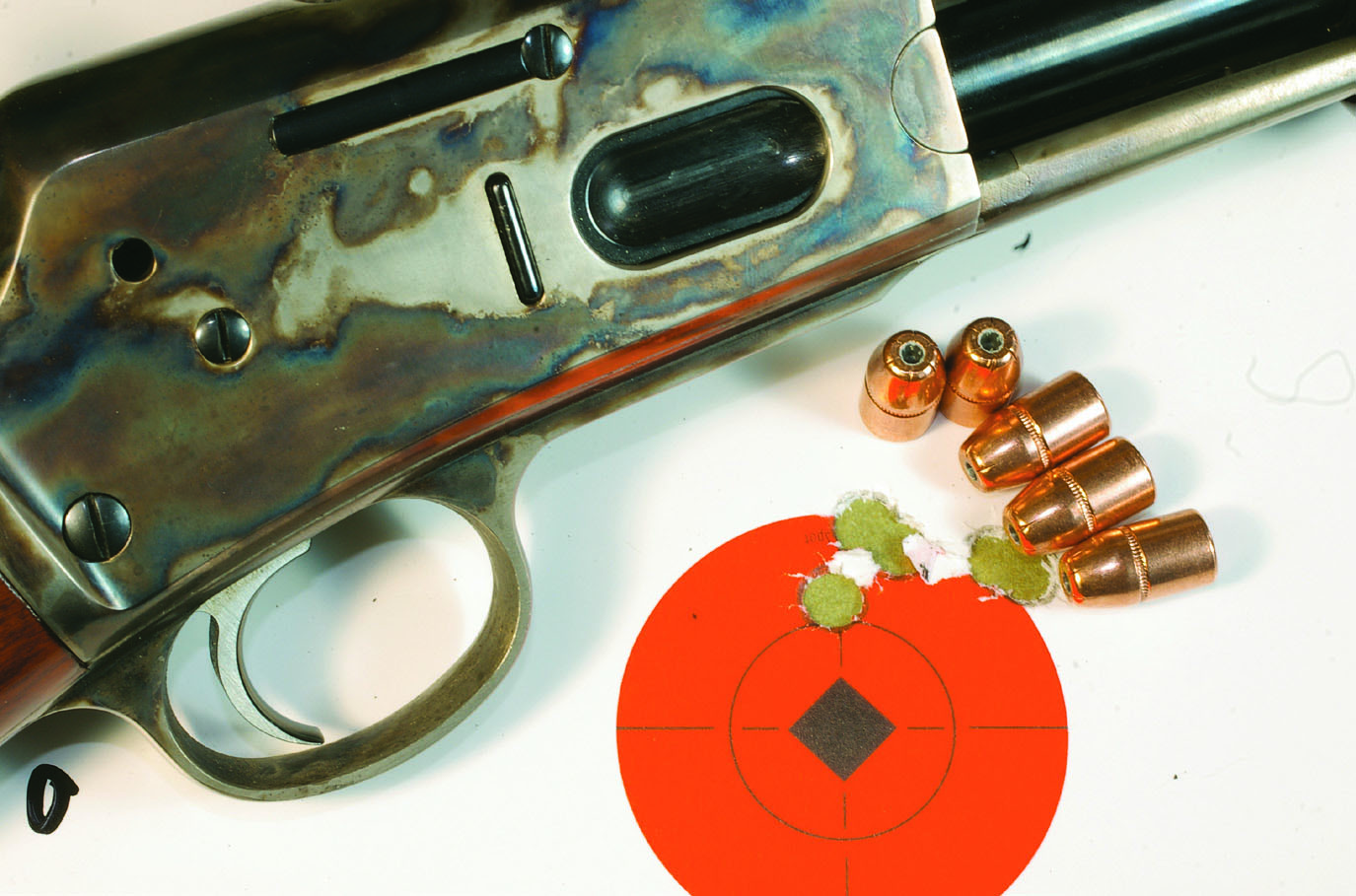
.357’s maximum length so they fed through the rifle’s action. That was easy to do as the crimping grooves on all the bullets (except the LBT cast bullet) were placed in the correct position for the right cartridge length.
I did read in one reloading manual that most rifles chambered for the .357 have bolts that lock at the rear and allow the bolt to spring slightly and stretch cases during firing. To see if that was a problem, I measured a handful of sized Federal .357 Magnum cases. They measured from 1.280 to 1.290 inches in length. The .357’s maximum case length is 1.290 inches, so the one case was right at maximum. After those cases had been fired with light and heavy loads, they varied in length from 1.274 to 1.282 inches. The cases did not stretch. In fact, they expanded when they were fired and actually shortened somewhat.
I loaded more of the RCBS cast bullets with Trail Boss and headed back to the range with the Uberti .357 the other day. I blasted dirt clods and cans left and right. A tube magazine full of the .357 cartridges quickly turned into empty casesraining down on my head. My niece Mikayla stood staring with a neglected look. Feeling guilty for hogging all the fun, I handed her the rifle and a full box of .357s. She ran the Uberti’s forearm grip back and forth like a trombone slide. In no time the ground was littered with empty cases.
“Got more shells?” she asked.


